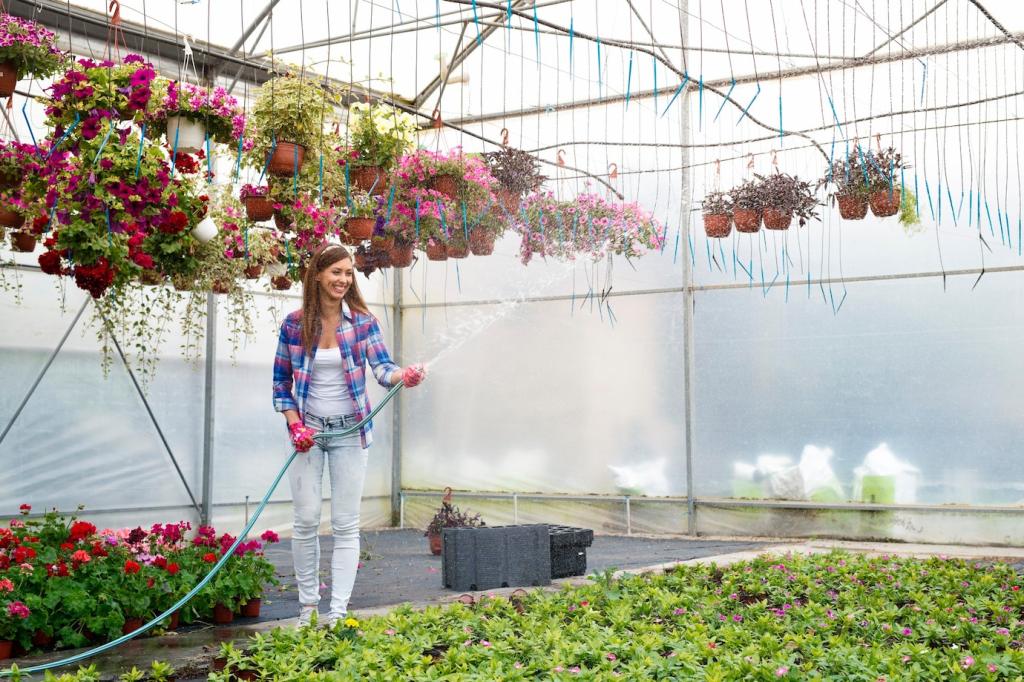Watering Techniques for Urban Plant Enthusiasts
For urban plant lovers, effective watering strategies are crucial to nurturing healthy greenery in the midst of city life. Limited space, variable light, and fluctuating microclimates challenge even the most passionate urban gardener. Understanding proper watering goes beyond daily routines; it involves observing your plants’ signals, adapting to changing weather, and choosing techniques that fit small spaces and busy schedules. This webpage explores practical approaches and smart solutions to help your indoor and balcony gardens thrive.
Understanding Urban Plant Needs
Microclimates and Their Impact
In cities, microclimates can vary drastically, even from one side of a window to another. Factors such as the orientation of your apartment, shading from surrounding buildings, and the proximity to heat sources like radiators or concrete walls all play a significant role in how much water your plants require. Understanding these influences enables you to adjust your watering frequency and amount, ensuring each plant receives optimal care in its unique location. By observing moisture retention and environmental factors, you become adept at addressing the needs of your urban oasis.
Container Size and Soil Choices
The containers you select, combined with your choice of potting soil, profoundly affect how water is retained and drained. Smaller pots dry out more rapidly, while larger ones may hold moisture too long, risking root rot. Urban gardeners often need to balance aesthetics with function, seeking decorative containers that also support healthy drainage. Selecting the right soil mix for the plant type, and repotting as needed, can dramatically improve how effectively water is delivered and absorbed, especially in limited indoor and balcony spaces.
Signs of Overwatering and Underwatering
Recognizing when a plant is thirsty—or has had too much—can be subtle but vital. Symptoms such as wilting, yellowing leaves, and drooping stems may indicate overwatering, while dry, brittle foliage and leaf drop can signal dehydration. Urban dwellers must pay attention not only to visible cues but also to the feel of the soil and the plant’s overall vigor. Responding promptly to these signs helps prevent long-term damage, ensuring that your urban garden remains vibrantly healthy, regardless of city living challenges.

Previous slide
Next slide
Water Conservation and Urban Sustainability
Collecting and Reusing Water
Collecting rainwater or repurposing water from dehumidifiers and cooking activities—like cooled pasta water—minimizes dependence on treated tap water. Urban dwellers can set up compact rain barrels on balconies or beneath downspouts to capture limited rainfall. Reusing water in this way not only decreases demand on municipal systems but also introduces beneficial minerals often absent from chlorinated tap water. Prioritizing non-soapy, chemical-free recycled water protects both your plants and the broader urban ecosystem.
Mulching and Moisture Retention
Applying organic mulch, pebbles, or even decorative stones to the surface of your plant containers slows evaporation and keeps soil consistently moist. In urban settings with the potential for rapid water loss from wind or sun, mulching offers a low-effort, effective strategy for water conservation. These coverings also suppress weeds and can enhance the aesthetic appeal of your indoor or outdoor plant displays. By planning your mulching materials and frequency, you ensure ongoing moisture retention tailored to your city microclimate.
Adapting to Drought and Extreme Heat
Drought and heatwaves are increasingly common in urban environments, challenging plant survival even in protected spaces. Adjusting watering schedules to early mornings or late evenings reduces evaporation rates and ensures plants can absorb water efficiently. Incorporating heat-tolerant species, adjusting the placement of containers to shadier areas, and temporarily increasing humidity through misting further combat the stresses of intense urban heat. Being proactive and responsive in your care routine ensures that city plants can weather even the harshest conditions.
